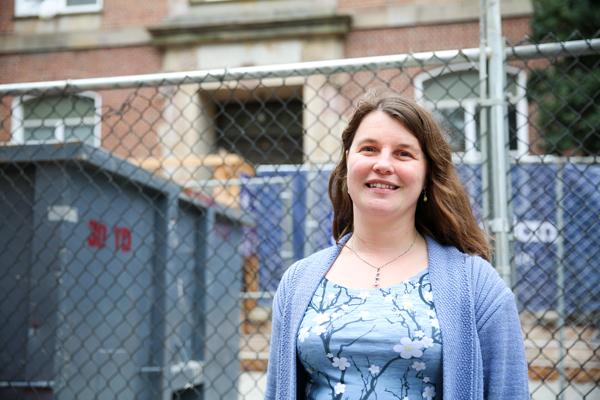After being left out of the Science and Engineering Hall, the physics department’s home is undergoing renovations.
Renovations to Corcoran Hall, which began at the end of the spring semester, will overhaul the aging building to accomodate physics teaching and research, physics faculty members said. The renovations come after the University committed millions of dollars to renovating Corcoran Hall and other academic buildings on campus, following the opening of the SEH.
Helmut Haberzettl, a physics professor who is part of the committee advising the redesign to Corcoran Hall, said officials have included physics faculty in the process to ensure the building is designed to fit their needs for classes and research.
“There are limitations with the form factor of building because we can’t change the building, but we’ve tried to make the best out of it,” Haberzettl said. “We are going to end up with a very nice building.”
Haberzettl added that officials have been “very, very responsible” in supporting faculty in the transition from Corcoran Hall to Staughton Hall, where the department is currently housed until Corcoran Hall is completed at the end of the spring 2018 semester.
“As far as all transitions go, there were a few glitches here and there while moving, but all an all it was good,” he said. “But every move is a disruption of work.”
Teresa Murphy, deputy provost for academic affairs, said in an email that faculty have not said their teaching or research has been affected by the renovations but noted that temporary relocations can pose challenges.
Murphy said that the renovated Corcoran Hall will have new general purpose classrooms for an “active learning environment,” SCALE-UP – student-centered activities for large enrollment undergraduate program – classrooms, physics seminar rooms, teaching labs and study spaces for physics and other students.
“We sought input from the faculty about what they would like to see in the new space, and we have incorporated their feedback into the renovations,” Murphy said. “We hope that whatever inconvenience physics faculty members have experienced during construction will be worth the wait. We are truly excited and can’t wait for them to use the new space.”
This is not the first time the 90-year-old Corcoran Hall has been renovated: The building was shut down for several days for repairs in 2013 after workers found a crack in the concrete of the basement that extended from one end of the hall to the other. Corcoran Hall was the first building on campus and is considered a historic structure.
Bill Briscoe, chair of the physics department, said relocating to Staughton Hall was tough because the move took place around final exams and Commencement. Faculty used the move as an opportunity to get rid of old papers and materials, and they found equipment they didn’t realize they had in the building, he said.
“Getting rid of 30 years worth of material was hard because I have an emotional attachment with the building itself,” Briscoe, who has been at GW for 36 years, said. “When you lack space you make use of every inch and so people just keep stuffing equipment in closets.”
Briscoe said renovations to the building will include the new Cornelius Bennhold Auditorium on the building’s second floor, named for a well-respected former physics department chair who passed away in 2009.
Faculty offices will be located near graduate student study spaces, which will make it easier for the students to access their professors, Briscoe said.
“In the old Corcoran there was very little space for the undergraduate students to get together and do their homework,” he said. “We’re trying to create room for both grad and undergrad students.”
The renovations will also include a newly designed and furnished optics lab in the basement. The lab will allow Briscoe and other faculty members to teach optics – a branch of physics studying the behavior of light – which he said he has not taught in about six years. The last time he taught it, Briscoe said the University didn’t have a proper lab for it.
“We really didn’t have to design research labs, but now we have the room for it,” Briscoe said. “We want to put it in because optics fits in, not only with what you would think of as optics, like making images and stuff like that, but with the astrophysicists, your observations depend on the optics and the instruments and students have to know that. So that, we have not been able to do for years.”
E. J. Downie, an associate professor of physics, said the additions to Corcoran Hall, like the SCALE-UP classrooms, will create an interactive learning environment for physics students, giving them a break from the traditional lecture models.
“These labs have proven to be successful in the past,” Downie said. “There are only three on campus now.”
Downie added that other undetermined disciplines will also use the teaching space or merge into the space, although Corcoran Hall will be mostly physics faculty.
Corcoran Hall has historical value on campus because it hosts a D.C. physics conference every year, and the bazooka gun was invented in the building’s basement.
“There are some desks from the 30s which were used by physics luminaries,” she said. “They have been wrapped and preserved.”








